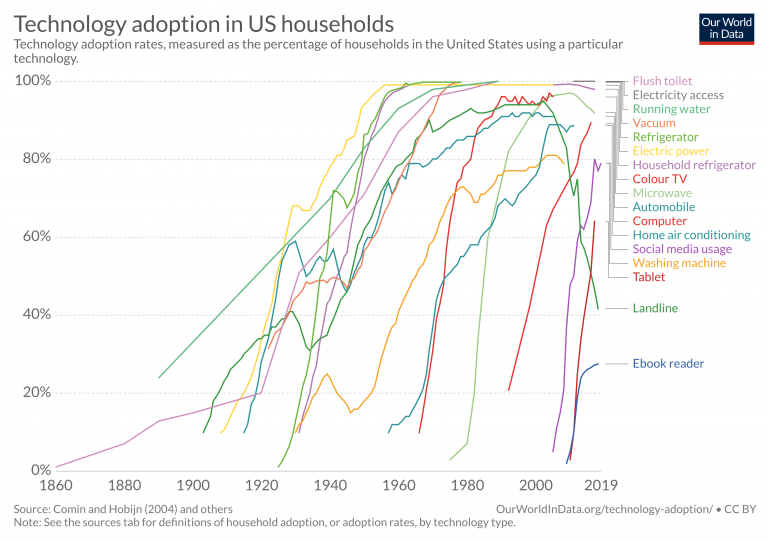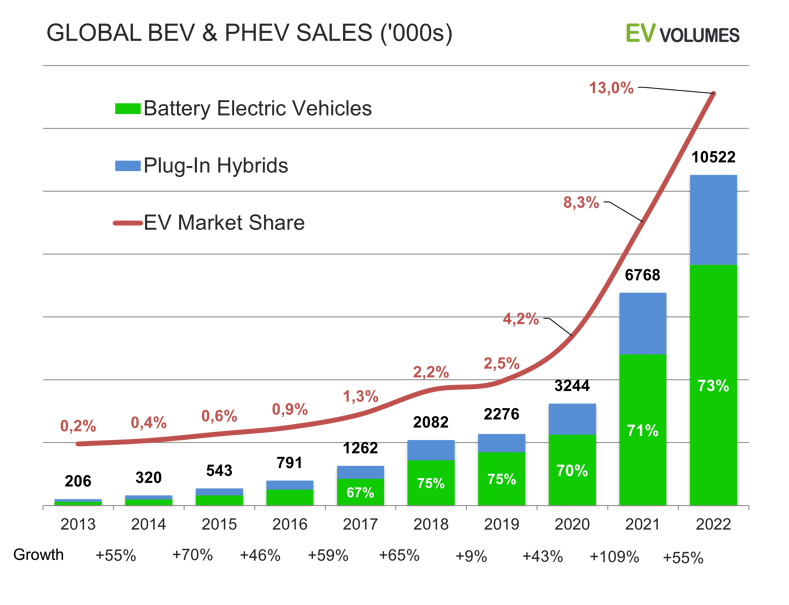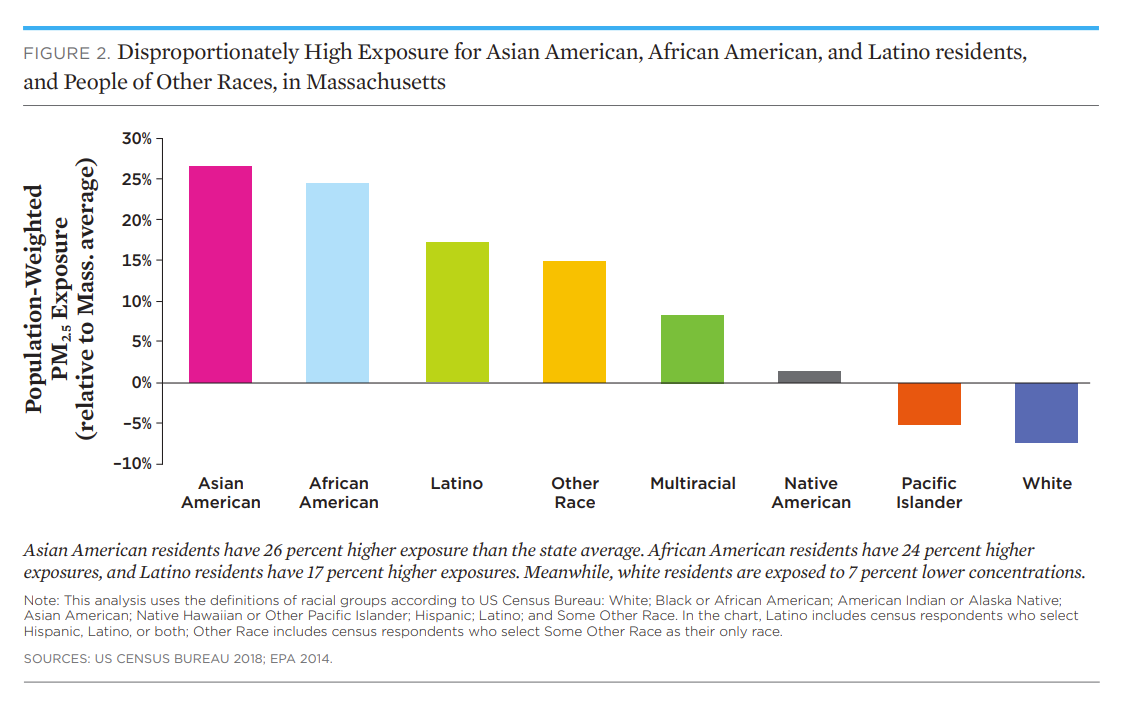Last week, the Environmental Protection Agency (EPA) released historic new proposed emissions standards for vehicles, both light-duty and medium- and heavy-duty. To meet the goals of the Paris Climate Agreement, the US as a whole must phase out the sale of new gas-powered cars by 2035. So far, the US is not on track to meet this challenge, but these new standards would set the country on the path to meeting this goal. These proposed regulations are the strongest emissions standards ever proposed by the EPA and the federal government’s “most aggressive climate regulation” ever.
What Are These Standards?
The EPA has the authority to regulate the emissions of greenhouse gases (GHG) and criteria pollutants from mobile sources (in other words, vehicles) according to the Clean Air Act. You may be familiar with the Corporate Average Fuel Efficiency (CAFE) standards, which require average fuel efficiency to increase over time (we’ve written in the past about how such policies should be stronger). On April 12, the EPA released two sets of proposed new standards: one for light- and medium-duty vehicles and another for heavy-duty vehicles.
Light- and Medium-Duty Vehicles
The proposed multi-pollutant standards for light- and medium-duty vehicles would apply from model year 2027 to model year 2032. The standards specifically limit emissions – they do not mandate electrification at a particular rate. However, the pace of emissions reductions they set is so high that automakers will have to rapidly electrify their line-ups to comply. The New York Times reports that 67% of new light-duty car and truck sales, and 46% of new medium-duty vehicles, will have to be electric by 2032 for automakers to comply with the standards as proposed.
(There are also lots of other standards in the 758-page document, including battery and warranty requirements and emissions test procedures, but the GHG and criteria pollutants are the main standards under discussion.)
Heavy-Duty Vehicles
The proposed multi-pollutant standards for light- and medium-duty vehicles are accompanied by proposed GHG standards for heavy-duty vehicles. These standards focus on GHG (not criteria pollutants) and would similarly apply to model year 2027 through 2032. Here, the New York Times reports that half of new buses and a quarter of new heavy-duty vehicle sales will have to be electric by 2032 for automakers to comply.

Heavy-duty diesel vehicles are disproportionately responsible for GHG emissions and the criteria pollutants that harm human health, so we need to see more electric trucks, like this one from Intelligent Labor & Moving, replace old dirty trucks.
This Proposal Is Groundbreaking
The science is clear: we need to reach 100% of new car sales by 2035 to limit warming to 1.5 degrees Celsius. Internationally, some countries are within sight of that goal: in 2022, Norway reach 88%, Sweden 56%, Germany 31%, China 30%, and the United Kingdom 23%. Right now in the US, electric vehicles (EVs) account for 5.8% of new car sales nationally. Of course, there’s a lot of variation regionally: 16% of new car sales in California were electric in 2022.
To get to 100% by 2035, we need this new set of regulations. Last year’s Inflation Reduction Act extended the federal tax credit for EV purchases for individuals and fleets, created all sorts of incentives for manufacturers to produce more EVs, and extended a tax credit for charging infrastructure installation. The Infrastructure Investment & Jobs Act is putting billions of dollars towards charging infrastructure, and various federal grant programs are putting new electric buses, school buses, and trucks on our roads. If we add these standards to the policy mix, we will transform the market faster and more equitably. Remember, these standards apply to new car sales only.
Change At This Speed Is Possible
It’s easy to forget that market transformations like this one do not happen linearly – the pace of transformation picks up the further you are into the change. Some of you may be familiar with this famous image of technology adoption curves:

You’ll note that the slope of each line tends to get steeper over time and then slow down for the last 10 or 20%. For example, take a look at the green line that starts right after the word “1980”, for the microwave. For the first couple of years, adoption was relatively measured, but then it took off, and within about a decade, we went from ~5% adoption to ~80%. A similar trend is already visible in EV sales. Take this graph of global battery-electric and plug-in hybrid vehicle sales from EV Volumes – you can see the slope of the line is getting steeper with time.

With these standards and the momentum of the rest of the world – particularly China and Europe (which is expected to aim for 100% by 2035 too) – the US can do this.
And a reminder: reaching any of these sales percentage goals (67% by model year 2032 or 100% by 2035) will take years to translate to the full fleet. The goal of all of these regulations is to reach a 100% zero-emission fleet by 2050, but since vehicles stay on the road for 15+ years, we’ve got to sell our last new fossil-fuel-powered cars in the 2030s.
Health Benefits
Our reliance on fossil fuel combustion causes an enormous amount of suffering and imposes huge costs on our health system by making people sick. The American Lung Association has found that reaching 100% of new car sales being electric by 2035 and 100% of medium- and heavy-duty trucks by 2040 would result in $1.2 trillion dollars in public health savings between 2020 and 2050. These harms are not distributed equally: poor communities and communities of color suffer the worst public health harm, nationally and locally. This resource from the Union of Concerned Scientists illustrates the local picture:

The faster we electrify, the faster we can clean the air for all.
What Are the Next Steps From Here?
The standards the EPA released this week are proposed standards. We are now in a public comment period where stakeholders and citizens can submit feedback to the EPA. For information on public hearings and how to submit written comments, please see this page for the light- and medium-duty vehicle standards and this page for the heavy-duty ones.
These standards are certainly not a done deal. The Biden administration has held extensive talks with both auto manufacturers and unions and that work will certainly continue. And it’s very likely that various entities will file lawsuits to stop these standards in the courts. However, the EPA expects to finalize the standards next year, in time for them to kick in with model year 2027.
Aren’t Massachusetts and Rhode Island already phasing out gas cars?
Those of you who regularly read our blog might be wondering wait, hasn’t Massachusetts done this already, and isn’t Rhode Island about to? Massachusetts did just adopt a set of standards called Advanced Clean Cars II (ACCII) (Rhode Island is slow-walking) that will require automakers to steadily increase the percentage of vehicles they sell that are electric until we reach 100% in model year 2035. These new federal standards and ACCII are NOT duplicative, and we need them both.
As explained above, the federal standards regulate emissions, not the percentage of electric cars. ACCII complements the federal effort by directly calling for a steady pace of electrification. Perhaps more importantly, ACCII only applies in the states that explicitly adopt these standards; the federal standards will apply across the country, creating a much larger market for automakers to have to supply.
Our view is that it makes even more sense for a state to adopt the ACCII rules if the EPA regulations go through. Thinking again about Rhode Island – carmakers could easily fulfill their obligations to the EPA without having to sell many EVs in Rhode Island because the Ocean State is so small. Adopting ACCII in our states will make sure drivers here have access to the full range of model choices.
Final Thoughts
Experts have said that the federal Inflation Reduction Act will dramatically clean up the electricity grid through tax credits for wind and solar. Now, with these EPA regulations, the country is taking another big step to mitigate the greenhouse gas emissions that have led to the climate crisis.




Comments